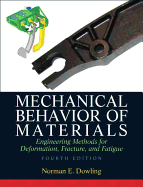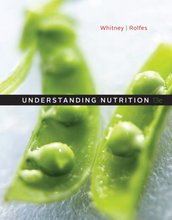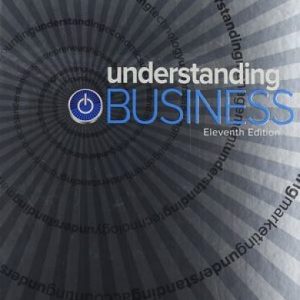Instant download Solutions Manual for Mechanical Behavior of Materials 4e by Norman E. Dowling 0131395068 pdf docx epub after payment.

Product details:
- ISBN-10 : 0131395068
- ISBN-13 : 978-0131395060
- Author: Norman E. Dowling
Mechanical Behavior of Materials, 4/e introduces the spectrum of mechanical behavior of materials, emphasizing practical engineering methods for testing structural materials to obtain their properties, and predicting their strength and life when used for machines, vehicles, and structures. With its logical treatment and ready-to-use format, it is ideal for practicing engineers and upper-level undergraduates who have completed elementary mechanics of materials courses.
Table of contents:
1 Introduction 1
1.1 Introduction 1
1.2 Types of Material Failure 2
1.3 Design and Materials Selection 10
1.4 Technological Challenge 16
1.5 Economic Importance of Fracture 18
1.6 Summary 19
References 20
Problems and Questions 20
2 Structure and Deformation in Materials 22
2.1 Introduction 22
2.2 Bonding in Solids 24
2.3 Structure in Crystalline Materials 28
2.4 Elastic Deformation and Theoretical Strength 32
2.5 Inelastic Deformation 37
2.6 Summary 43
References 44
Problems and Questions 45
3 A Survey of Engineering Materials 47
3.1 Introduction 47
3.2 Alloying and Processing of Metals 48
3.3 Irons and Steels 54
3.4 Nonferrous Metals 62
3.5 Polymers 66
3.6 Ceramics and Glasses 76
3.7 Composite Materials 82
3.8 Materials Selection for Engineering Components 87
3.9 Summary 93
References 95
Problems and Questions 96
4 Mechanical Testing: Tension Test and Other Basic Tests 100
4.1 Introduction 100
4.2 Introduction to Tension Test 105
4.3 Engineering Stress—Strain Properties 110
4.4 Trends in Tensile Behavior 119
4.5 True Stress—Strain Interpretation of Tension Test 125
4.6 Compression Test 133
4.7 Hardness Tests 139
4.8 Notch-Impact Tests 146
4.9 Bending and Torsion Tests 151
4.10 Summary 157
References 158
Problems and Questions 159
5 Stress—Strain Relationships and Behavior 172
5.1 Introduction 172
5.2 Models for Deformation Behavior 173
5.3 Elastic Deformation 183
5.4 Anisotropic Materials 196
5.5 Summary 205
References 207
Problems and Questions 207
6 Review of Complex and Principal States of Stress and Strain 216
6.1 Introduction 216
6.2 Plane Stress 217
6.3 Principal Stresses and the Maximum Shear Stress 227
6.4 Three-Dimensional States of Stress 235
6.5 Stresses on the Octahedral Planes 242
6.6 Complex States of Strain 244
6.7 Summary 249
References 251
Problems and Questions 251
7 Yielding and Fracture under Combined Stresses 257
7.1 Introduction 257
7.2 General Form of Failure Criteria 259
7.3 Maximum Normal Stress Fracture Criterion 261
7.4 Maximum Shear Stress Yield Criterion 264
7.5 Octahedral Shear Stress Yield Criterion 270
7.6 Discussion of the Basic Failure Criteria 277
7.7 Coulomb—Mohr Fracture Criterion 283
7.8 Modified Mohr Fracture Criterion 293
7.9 Additional Comments on Failure Criteria 300
7.10 Summary 303
References 304
Problems and Questions 305
8 Fracture of Cracked Members 316
8.1 Introduction 316
8.2 Preliminary Discussion 319
8.3 Mathematical Concepts 326
8.4 Application of K to Design and Analysis 330
8.5 Additional Topics on Application of K 341
8.6 Fracture Toughness Values and Trends 353
8.7 Plastic Zone Size, and Plasticity Limitations on LEFM 363
8.8 Discussion of Fracture Toughness Testing 372
8.9 Extensions of Fracture Mechanics Beyond Linear Elasticity 373
8.10 Summary 380
References 383
Problems and Questions 384
9 Fatigue of Materials: Introduction and Stress-Based Approach 398
9.1 Introduction 398
9.2 Definitions and Concepts 400
9.3 Sources of Cyclic Loading 411
9.4 Fatigue Testing 412
9.5 The Physical Nature of Fatigue Damage 417
9.6 Trends in S-N Curves 423
9.7 Mean Stresses 433
9.8 Multiaxial Stresses 445
9.9 Variable Amplitude Loading 450
9.10 Summary 460
References 461
Problems and Questions 463
10 Stress-Based Approach to Fatigue: Notched Members 473
10.1 Introduction 473
10.2 Notch Effects 475
10.3 Notch Sensitivity and Empirical Estimates of k f 479
10.4 Estimating Long-Life Fatigue Strengths (Fatigue Limits) 483
10.5 Notch Effects at Intermediate and Short Lives 488
10.6 Combined Effects of Notches and Mean Stress 492
10.7 Estimating S-N Curves 502
10.8 Use of Component S-N Data 509
10.9 Designing to Avoid Fatigue Failure 518
10.10 Discussion 523
10.11 Summary 524
References 526
Problems and Questions 527
11 Fatigue Crack Growth 542
11.1 Introduction 542
11.2 Preliminary Discussion 543
11.3 Fatigue Crack Growth Rate Testing 551
11.4 Effects of R = Smin/ Smax on Fatigue Crack Growth 556
11.5 Trends in Fatigue Crack Growth Behavior 566
11.6 Life Estimates for Constant Amplitude Loading 572
11.7 Life Estimates for Variable Amplitude Loading 583
11.8 Design Considerations 589
11.9 Plasticity Aspects and Limitations of LEFM for Fatigue Crack
Growth 591
11.10 Environmental Crack Growth 598
11.11 Summary 603
References 605
Problems and Questions 606
12 Plastic Deformation Behavior and Models for Materials 620
12.1 Introduction 620
12.2 Stress—Strain Curves 623
12.3 Three-Dimensional Stress—Strain Relationships 631
12.4 Unloading and Cyclic Loading Behavior from Rheological
Models 641
12.5 Cyclic Stress—Strain Behavior of Real Materials 650
12.6 Summary 663
References 665
Problems and Questions 666
13 Stress—Strain Analysis of Plastically Deforming Members 675
13.1 Introduction 675
13.2 Plasticity in Bending 676
13.3 Residual Stresses and Strains for Bending 685
13.4 Plasticity of Circular Shafts in Torsion 689
13.5 Notched Members 692
13.6 Cyclic Loading 704
13.7 Summary 715
References 716
Problems and Questions 717
14 Strain-Based Approach to Fatigue 727
14.1 Introduction 727
14.2 Strain Versus Life Curves 730
14.3 Mean Stress Effects 740
14.4 Multiaxial Stress Effects 749
14.5 Life Estimates for Structural Components 753
14.6 Discussion 763
14.7 Summary 771
References 772
Problems and Questions 773
15 Time-Dependent Behavior: Creep and Damping 784
15.1 Introduction 784
15.2 Creep Testing 786
15.3 Physical Mechanisms of Creep 791
15.4 Time—Temperature Parameters and Life Estimates 803
15.5 Creep Failure under Varying Stress 815
15.6 Stress—Strain—Time Relationships 818
15.7 Creep Deformation under Varying Stress 823
15.8 Creep Deformation under Multiaxial Stress 830
15.9 Component Stress—Strain Analysis 832
15.10 Energy Dissipation (Damping) in Materials 837
15.11 Summary 846
References 849
Problems and Questions 850
Appendix A Review of Selected Topics from Mechanics of Materials 862
A.1 Introduction 862
A.2 Basic Formulas for Stresses and Deflections 862
A.3 Properties of Areas 864
A.4 Shears, Moments, and Deflections in Beams 866
A.5 Stresses in Pressure Vessels, Tubes, and Discs 866
A.6 Elastic Stress Concentration Factors for Notches 871
A.7 Fully Plastic Yielding Loads 872
References 881
Appendix B Statistical Variation in Materials Properties 882
B.1 Introduction 882
B.2 Mean and Standard Deviation 882
B.3 Normal or Gaussian Distribution 884
B.4 Typical Variation in Materials Properties 887
B.5 One-Sided Tolerance Limits 887
B.6 Discussion 889
References 890
ANSWERS FOR SELECTED PROBLEMS AND QUESTIONS 891
BIBLIOGRAPHY 903
INDEX 916
People also search:
Mechanical Behavior of Materials 4e
Mechanical Behavior of Materials 4e pdf
Mechanical Behavior of Materials
mechanical properties of materials at low temperatures
|
mechanical properties of advanced materials |





